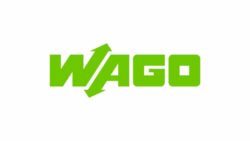Digital transformation requires, in addition to the technology employed, above all, the project-related interaction of various company departments. Only when the agile methods made possible by modern technology are implemented do companies fully benefit from the potential of their IoT applications.
The challenge: Inhibiting factors threaten the transformation
One obstacle hindering digital transformation is the need for more adoption of the Industrial IoT (IIoT) in many companies. This is confirmed by a recent IDC study*, which shows that only 29 percent of the surveyed industrial companies are actively implementing IIoT projects. Of these, only a third measure the success of their IIoT projects, and only a quarter have developed comprehensive decision-making rules to guide these projects. A holistic approach to data and analysis strategy should be included. However, without a solid data and analysis strategy, companies face significant challenges, such as high costs, security concerns, and the inability to integrate data sources. The insufficient integration of IT and OT teams leads to communication gaps and security risks. These deficits can significantly impede the successful implementation of IIoT projects.
IT architectures are also becoming increasingly modular. The resulting flexibility also requires well-structured management. Only then can the enormous potential of demand-driven, agile resource utilization be fully realized. The constant change brought about by digital transformation also presupposes that all devices and structures used today can be expanded in the future. Scalability is a crucial criterion when it comes to investing in IT infrastructure. At the same time, every installation must be quickly implemented, easy to use, and secure. The trend is moving towards increased use of software containers.
The principle of containerization has been in use for a long time: it is designed to isolate processes by consolidating all software elements into a container. This makes moving the software or application to other environments easy, enabling cross-platform and cross-infrastructure usage. By using containers, companies reduce their dependence on a single operating system or platform and the labor-intensive adaptation of all code to the new environment. The more modular an architecture is, the more personnel resources are tied up in managing and maintaining individual software and hardware elements.
The right management tools and the appropriate hardware components are needed to manage these containers and make them usable at the operational automation level (OT). The tools must be designed so that even non-IT specialists can use them easily and adjust them as needed.
The solution: Portainer facilitates the implementation of container infrastructure
Open-source systems like Docker contribute to the increasing prevalence of container infrastructure. Estimates suggest that around 75% of larger companies will use a container application in the short term. Portainer is a leading container and device management platform used across industries worldwide, with over 3.4 billion downloads. It is the only platform that supports Docker, Docker Swarm, Podman, Nomad, and Kubernetes, and is specifically designed to reduce complexity for usersuser complexity. A successful combination of hardware and software is crucial for easy and secure management ofeasily and securely managing applications and devices, compatible with both a company’s OT and IT organizations.
Therefore, WAGO and Portainer have jointly developed a solution to achieve this goal: to make container management usable for various use cases, such as in smart manufacturing, smart building and smart energy. The WAGO Group is an internationally leading provider of connection and automation technology and interface electronics. In the field of spring pressure connection technology, the family-owned company is the world leader. WAGO products are used around the globe in industry, energy, process and building technology, as well as in mechanical and plant engineering and traffic engineering. They are used wherever electrical lines need to be connected or complex automation systems need to be controlled.
Portainer software runs on WAGO’s open-edge devices, and this combination makes the complex management of edge devices in a container infrastructure clear and manageable. Portainer’s self-explanatory graphical interface allows OT operators in industrial applications to handle IT technology safely.
While device management, which encompasses several thousand devices depending on the project, takes place centrally, separating processes safeguards production networks. The user carries out control, and can also be done offline within the network. Portainer uses a small portion of the often-constrained memory available on edge devices. All common environments are supported.
The result: Complex technology applied in a simple way
Central IT tools facilitate uniform handling, reducing the complexity of individual platform solutions. With the right tools, securing individual containers becomes reliable and efficient. Tasks that consume a lot of time and personnel can slow down digital transformation due to the need for more skilled workers, weakening companies in competition. This risk is reduced with the right tools. With its solution, Portainer focuses on end-users who need a simple solution for complex tasks in everyday work. Already, 650,000 active users in various industries are benefiting from this concept. The successful integration of IT and OT provided by the joint solution of Portainer and WAGO is the basis for various smart factory applications.
*Link to the study: https://www.idc.com/getdoc.jsp?containerId=prEUR149013422







